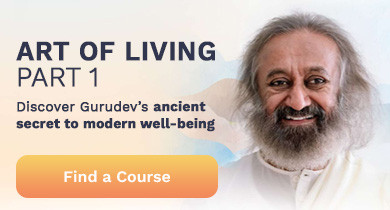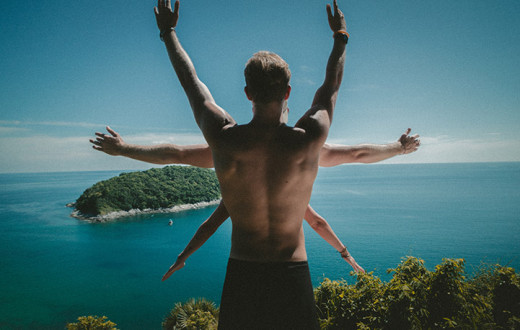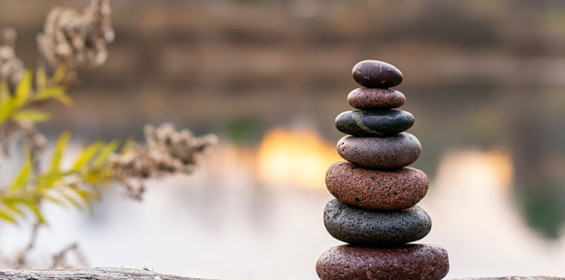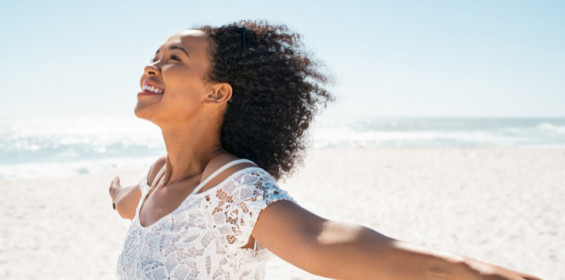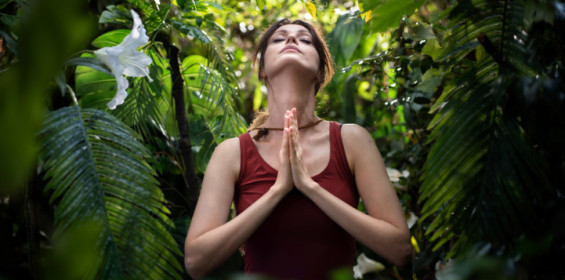Posted: September 12, 2018
Upward Salute — Urdhva Hastasana (OOrd-vaah-haas-tah-SUN-ah) — is an extension of mountain pose and is the second step in the Sun Salute sequence. The pose is suitable for all levels, and can be accomodated to fit all needs. It gets its name from the Sanskrit words, urdhva, meaning upward, hasta, meaning hand and asana, meaning posture.
Level of Difficulty: Beginner
Step-by-Step Instructions
- Start in Tadasana, standing at the top of your mat with your big toes touching and a sliver of space in between your heels.
- Starting from the base of the pose, align your toes, bringing your weight into the four corners of your feet. Make sure your weight is distributed equally.
- Activate your thigh muscles and lift your knee caps. Tuck your pelvis.
- On an inhale, roll your shoulders up to your ears and on an exhale, roll your shoulders down your back. This straightens your spine and improves posture.
- Hang your arms beside your torso with your hands gently engaged, fingers towards the floor.
- Bring your head over your pelvis, creating one long line of energy up and down your body. Imagine that a string is pulling the crown of your head towards the ceiling.
- Elongate your neck. Bring your chin parallel to the floor and gaze gently in front of you.
- Release every muscle in your face, including your forehead, scalp, and tongue. Fully relax your face while keeping the rest of your body active.
- On an inhale, slowly raise your arms straight above your head, fingers pointing towards the ceiling and palms facing each other. Exhale.
- On an inhale, raise your shoulders up to your ears and on an exhale roll your shoulders down your back, broadening your collarbones and standing taller.
- Release all tension from your face and gaze at one point in front of you.
- After 5-10 breaths, slowly lower your arms back down to your side and stand in Tadasana.
Benefits
- Energizes and rejuvenates
- Improves posture
- Lengthens the spine
- Stretches the shoulders and arms
- Improves concentration
- Releases tension in the shoulders
Precautions
If you have any of these, practice this asana with care:
- Headaches
- Insomnia
- Exhaustion
- Low Blood Pressure
Modifications and Variations
To modify: If you have issues with your knees, stand with your feet hip-width distance apart and a slight bend in your knees. If you are a beginner, stand with your back against a wall for support in creating a straight line in your body. If standing is not possible, practice Mountain Pose in a chair, following the instructions for the upper body while keeping the feet firmly grounded on the floor. If you have a limited range of motion in your shoulders and/or arms, only lift your arms as high as is comfortably possible.
Preparatory Poses and Follow up Poses
- Child’s Pose | Balasana (Preparatory)
- Standing Forward Bend | Uttanasana (Follow-Up)
- Standing Sideways Bending | Konasana (Follow-Up)
- Warrior Pose | Virabhadrasana (Follow-up)
While a regular yoga practice can result in improved health, know that it is not a substitute for medical treatment. It is important to learn and practice yoga under the supervision of a trained teacher. In the case of a medical condition, practice yoga after consulting a doctor. Do you need information on courses? Contact us at programs@us.artofliving.org to find a Sri Sri Yoga course at an Art of Living Center near you.
